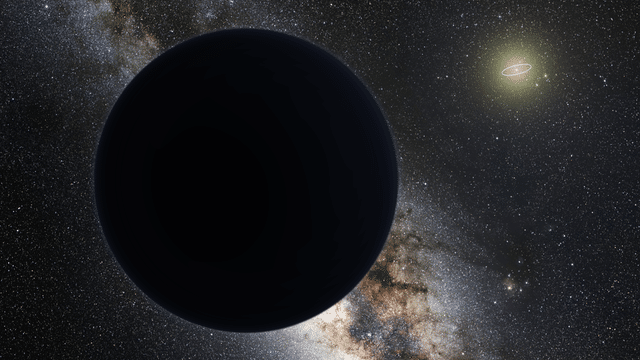New Dwarf Planet Discovery Disputes Planet Nine Theory

The recent discovery of a new trans-Neptunian object (TNO) named 2017 OF201 has sparked significant interest among astronomers, as it challenges the long-held hypothesis of a hidden ninth planet in our solar system. This newly identified potential dwarf planet boasts an extraordinary orbit that extends over 157 billion miles from the sun, making it one of the most distant objects known. With an estimated diameter of 435 miles, 2017 OF201’s unique characteristics could provide valuable insights into the mysteries of the outer solar system.
The New Dwarf Planet
The object 2017 OF201 has been classified as a dwarf planet due to its substantial size, with a diameter of approximately 435 miles. Researchers utilized data from the DECaLS survey and the Canada–France–Hawaii Telescope to identify this distant body. Its orbit is particularly noteworthy; the closest point to the sun, known as perihelion, is about 44.5 astronomical units (AU), which is similar to Pluto’s orbit. In contrast, its farthest point, or aphelion, reaches an astonishing 1,600 AU. This extreme distance makes it impossible to observe with current telescopes, and it was only detected because it last approached the sun in 1930, allowing astronomers to study its trajectory.
2017 OF201 resides in the Scattered Disk, a region beyond the Kuiper Belt populated by icy bodies on highly elongated and inclined orbits. The discovery of this TNO suggests that there may be many more similar objects in the Scattered Disk and beyond. Understanding such distant bodies is crucial for unraveling the complexities of the outer solar system and the formation of its various components.
Discarding Planet Nine
The emergence of 2017 OF201 poses a significant challenge to the Planet Nine hypothesis, which proposes the existence of a massive, unseen planet that influences the orbits of distant TNOs. While many extreme TNOs exhibit a clustered orbital pattern that supports this theory, 2017 OF201’s orbit is notably unclustered. This discrepancy raises questions about the validity of the Planet Nine hypothesis.
Although proponents of Planet Nine argue that such deviations could occur, they also contend that the gravitational effects of a massive planet would ultimately lead to unstable orbits over millions of years. The observation of 2017 OF201, with its unique orbital characteristics, adds to the growing skepticism surrounding the existence of Planet Nine. As researchers continue to explore the outer solar system, the implications of this discovery may reshape our understanding of celestial dynamics and the potential for undiscovered objects in our cosmic neighborhood.
Observer Voice is the one stop site for National, International news, Sports, Editor’s Choice, Art/culture contents, Quotes and much more. We also cover historical contents. Historical contents includes World History, Indian History, and what happened today. The website also covers Entertainment across the India and World.
Follow Us on Twitter, Instagram, Facebook, & LinkedIn

